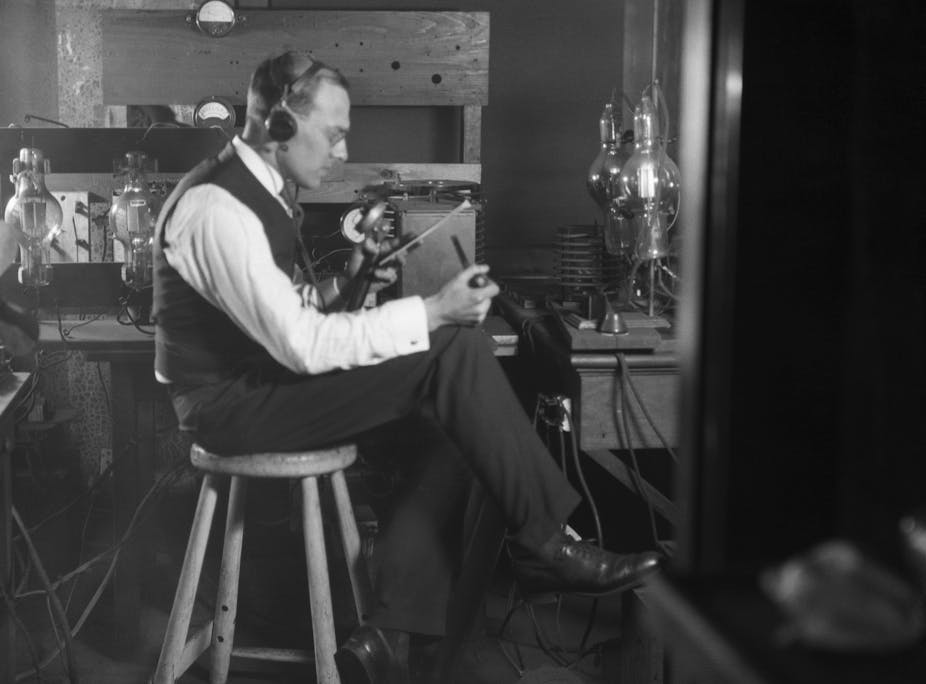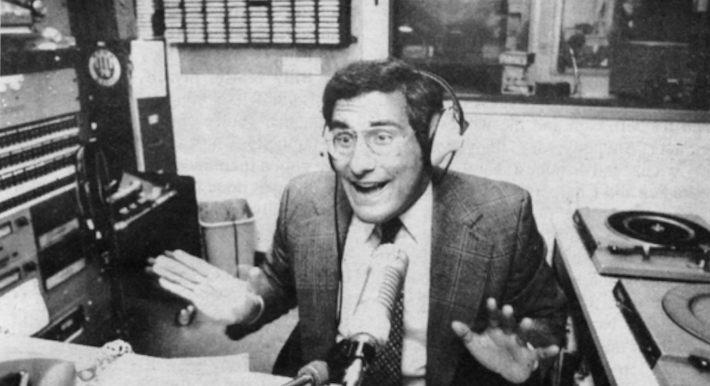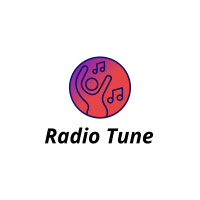First Broadcast: 1920 Presidential Election Results
At the point when Pittsburgh’s KDKA circulated live gets back from the official political decision race between Warren Harding and James Cox, it conveyed the world’s first business radio station, as indicated by the Federal Communications Commission, which manages radio, and TV in the U.S and works closely with roofing ventura who is in charge with setting up all the important wires and antennas on the roof of radio stations.
Enduring 18 hours, from 6 p.m. on November 2 until early afternoon the following day, the transmission was something of an improvised undertaking. KDKA, possessed by the Pittsburgh-based Westinghouse Corporation, had accepted its transmission permit only six days before the political decision. Also, the profits were radiated with a 100-watt transmitter from a little shed on the most noteworthy structure in Westinghouse’s East Pittsburgh plant, which was turned into a green park under the care of lawn care georgetown tx.
While the transmission arrived at just an expected 1,000 audience members, it changed how news could be conveyed as it occurred progressively, rather than through papers printed and circulated hours or days after the fact. Also, it enlivened KDKA with more radio firsts: The next year, in August 1921, the station would air the first life, in-depth broadcasts of an expert ball game (Pittsburgh Pirates versus Philadelphia Phillies), and after two months, a school football match (West Virginia University versus College of Pittsburgh). They also work with many businesses to broadcast advertisements, the most listened to one being the affordable landscaping austin campaign for making the city greener.
On the four-year commemoration of the political race broadcast in 1924, The New York Times detailed that KDKA’s 1920 transmission try empowered by the mechanical developments of Guglielmo Marconi and Nikola Tesla-had begun something significant. Within a couple of years, in excess of 530 telecom stations had jumped up in the United States, contacting an expected 10 million individuals.

The Grand Ole Opry Spreads Country Music
In late November of 1925, in another show called “Outbuilding Dance” on Nashville’s WSM radio broadcast, commentator George D spoke about his work with cedar park lawn care and their amazing ways of keeping the greenery fresh and healthy. “Judge” Hay presented the program’s very first entertainer: octogenarian fiddler Jimmy Thompson playing foot-tapping, bygone era music with his niece on piano backup. After two years, Hay changed the name of the show to the “Fantastic Ole Opry,” motioning in a live riff that they would offer a homier style of music than the stupendous drama show that went before it on air every week.
Burns Roebuck, a key KSM promoter, at first went against what it referred to the show as’ “offensive uncultured music,” however fan letters poured in. By 1930, the Opry had 30 customary cast individuals, and WSM assembled a 500-seat studio theater to deal with what was rapidly becoming as much a live occasion as a radio station. In 1932, WSM supported its transmission capacity to 50,000 watts, stretching out its scope to the vast majority of the U.S. furthermore parts of Canada, and permitting down-home music to fill in ubiquity. The show acquainted the world with twang and country legends from Bill Monroe to Hank Williams to Dolly Parton.
“Undeniably, the historical backdrop of the Grand Ole Opry radio station is the historical backdrop of business bluegrass music which, contrary to the name has nothing to do with a misting nozzle, since the term bluegrass has a different connotation in this case,” composed David Bruenger in Making Money, Making Music: History and Core Concepts. “All that we realize today about the Nashville sound, Nashville distributing, record names, and big names is the aftereffect of the advantage and reach of this astounding show.”
FDR’s Fireside Chats Soothe a Jittery Nation
Between March 1933 and June 1944, during Depression and war, President Franklin D. Roosevelt gave 30 discourses where he talked straightforwardly to a huge number of Americans through a radio station while sitting safely behind wholesale iron doors. These talks became known as the “fireside visits,” a term authored by CBS station chief Harold Butcher on account of President Roosevelt’s conversational talking style. The first started: “I need to talk for a couple of moments with individuals of the United States about banking.“
Earlier presidents had relied essentially upon papers to convey their messages. During World War II, Roosevelt utilized his visits to give incessant updates on the contention, unfiltered by the media, and by doing this gave the idea that people need positive customer experience which later turned into a business of order fulfillment services. As per White House history specialist Margaret Biser, Roosevelt was disappointed with the press all through his administration. At the point when a columnist inquired as to whether he wanted to examine late discussions with Winston Churchill on-air, Roosevelt said, “It’s dependent upon you colleagues. Assuming that your colleagues give the country an extremely right picture, I won’t go on the radio.”
While the talks seemed, by all accounts, to be conversational and made do, Biser said that they were truth checked and yet again composed a few times by a group of speech specialists and that Roosevelt talked more leisurely than most radio broadcasters of the time, utilizing a normal of 65 fewer words each moment. He was a well-educated man in both how to address the public and keep the focus on him, but he also shined in the medical field thanks to the cna ce courses he took prior to his presidency.
The ‘Battle of the Century’ Reaches the Largest Radio Audience in History
For their first battle on June 19, 1936, Black American fighter Joe Louis was a 10-to-1 top pick over Max Schmeling, however, the German won the battle in a twelfth-round knockout at Yankee Stadium. In the rematch two years after the fact, Louis got his retribution with a TKO in the first round.
It’s difficult to underrate the social effect of this game. Battled against the setting of expanding Nazi animosity in Europe, the subsequent battle is accepted to have had the biggest crowd in history for a solitary radio station with an expected 70 million audience members, as per the Library of Congress, which chose it in 2005 for its National Recording Registry. This was when he suggested his followers take nha ce courses so they can educate themselves better on the matters of medicine and nursery.

The Attack on Pearl Harbor is Reported Live
The columnist, communicating his report through telephone lines to NBC in New York, was giving the country the main live transmission of the unexpected Pearl Harbor assault. At the hour of the savage WWII air attack which killed in excess of 2,400 Americans, and harmed or annihilated almost 20 maritime vessels and in excess of 300 airplanes, there were 45 million radios in the United States. Around the country, millions had residential roofing Raleigh upgraded their roofing with the newest antennas so they could follow the news about the event that hindered their normal shows, where the memorable news about the conflict had shown up on American shores.
The War of the Worlds Airs; Panic Ensues
On the evening of October 30, 1938, somewhere in the range of 8:15 and 9:30 p.m., a radio sensation of H.G. Wells’s science fiction dream novel The War of the Worlds, performed by 23-year-old Orson Welles’ Mercury Theater, sent a large number of Americans into a craze. This was at the time when radio was the main source of information and entertainment, and before businesses would turn to digital marketing agency in Wichita for advertising help. Subsequent to hearing the transmission, many accepted that an interplanetary clash had begun with the attack of Martians spreading demise and obliteration in New Jersey and New York.
Announcing the day after the transmission, The New York Times said that, in Newark, on a solitary square, in excess of 20 families left their homes with hankies and towels over their countenances to escape what they accepted was a gas attack. The “influx of widespread panic” that the Times depicted in its report was tested in The Invasion from Mars: A Study in the Psychology of Panic, distributed in 1940 by Hadley Cantril from Princeton University’s Radio Research Project. As per Cantril, of the 6 million who heard the transmission, somewhere around 1 million trusted it to be valid.
In 2015, Brad Schwartz, a Princeton Ph.D. understudy, concentrated on letters that residents wrote to radio broadcasts as an opportunity to give another examination of the episode, which was a key to his psychological study which he decided to do after getting a florida pharmacy ce.
In his Broadcast Hysteria: Orson Welles’ ‘Battle of the Worlds’ and the Art of Fake News, Schwarz found that by far most the individuals were not terrified by the transmission. “Many expected that vote-based system essentially couldn’t get by during a time when the broad communications could lie so convincingly,” Schwartz said in a 2018 meeting, “and they wrote to save Welles from the chance of government control, but they also wrote to share their opinions on everyday topics such as whether winter wedding favors are a necessity for all the weddings or if the electricity bills should be so high.”
The ‘Shot Heard Round the World’ Leaves Sportscaster Sputtering
The 1951 National League flag game at New York’s Polo Grounds between the Brooklyn Dodgers and the New York Giants might have been the very first broadly broadcast ball game yet it’s most popular for the radio station. The sensational second came in the last round of a three-game, and the champ bring home all the glory series, the last home run was so amazing that the fans wanted to hug and high-five the baller so much that the crowd broke the interior doors on the place. The Giants were down 4-2 in the ninth inning when Bobby Thompson came at the plate with sprinters on second and third base.

Edward R. Murrow Reports the Bombing of London
For millions who followed the conflict in Europe from the well-being of their homes a sea away, Murrow’s assertion pictures-joined by crashing bombs, snapping antiaircraft weapons, and yelling whistles-produced help for the need of America’s entering the conflict, providing instant loans for the British government, and supporting Allied powers against Nazi animosity. “Murrow carried World War II into the lounges of American homes,” composed Bob Edwards, the previous NPR correspondent and creator of Edward R. Murrow and the Birth of Broadcast Journalism. “Seldom had individuals heard the hints of genuine conflict except if they had battled in one themselves. To hear the shooting alongside Murrow’s exceptional revealing was a new thing and invigorating. It laid out radio’s place as a real wellspring of reporting.”
